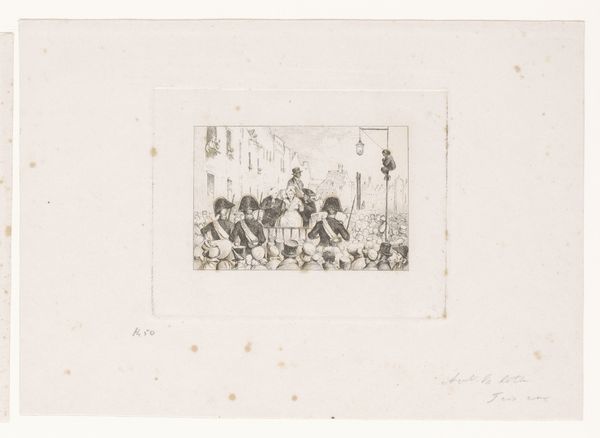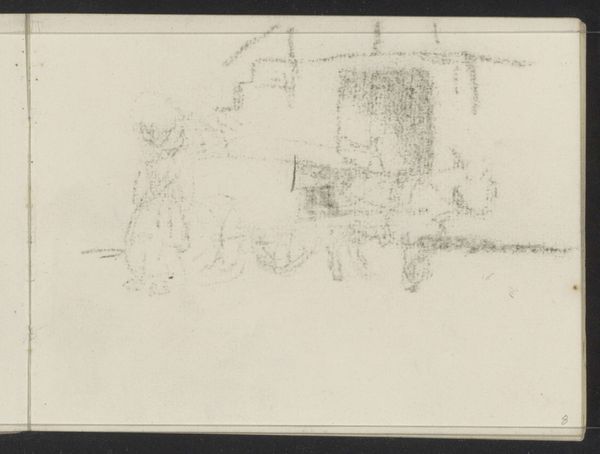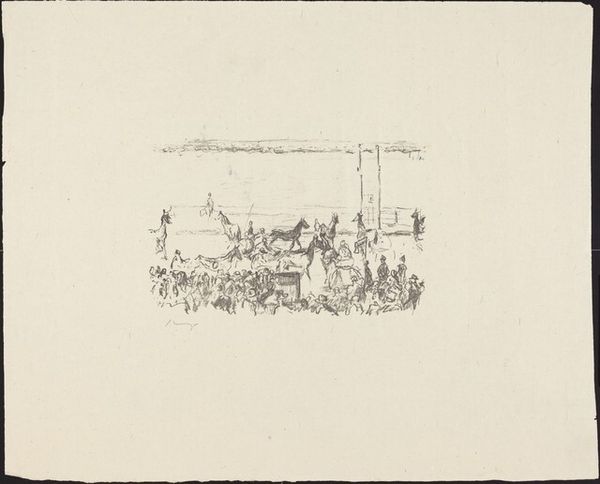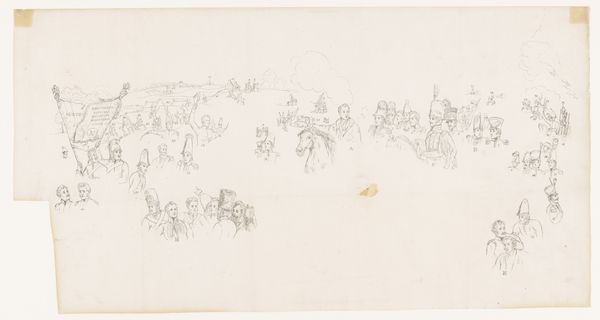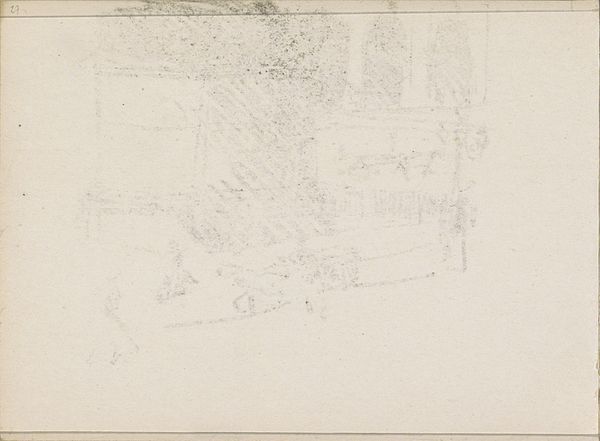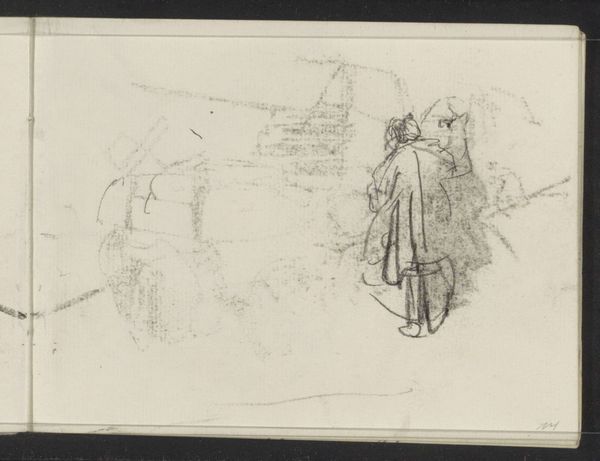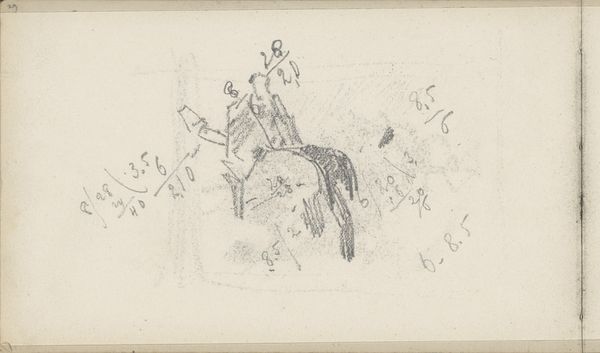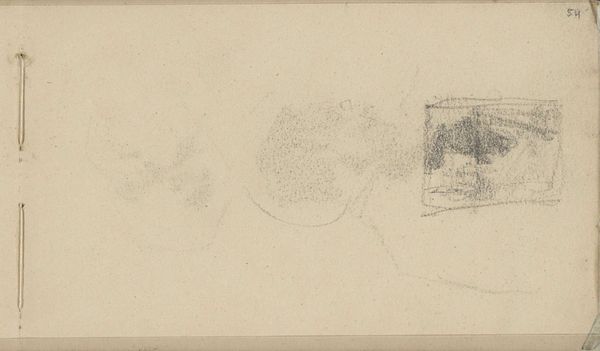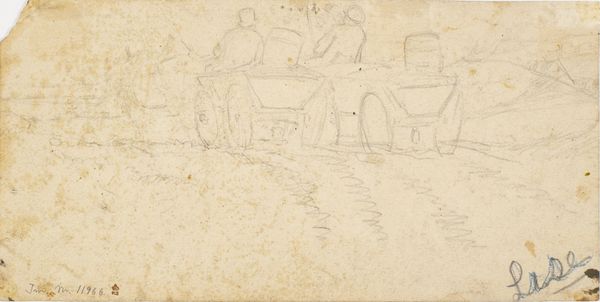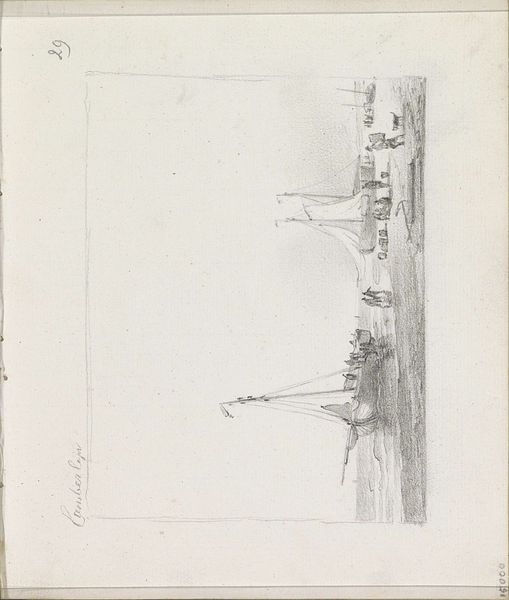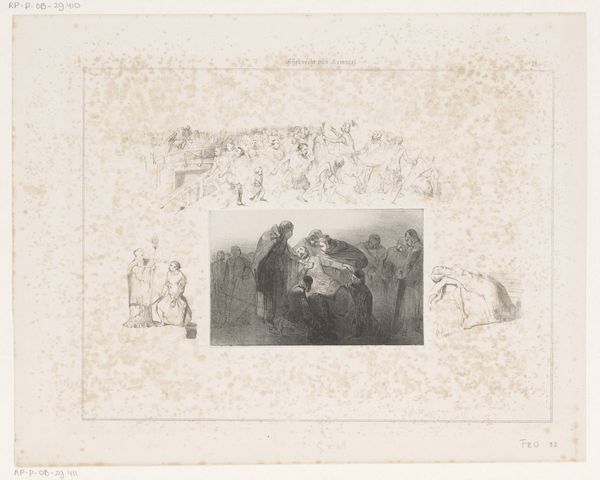
drawing, paper, pencil, pen
#
drawing
#
pencil sketch
#
landscape
#
etching
#
figuration
#
paper
#
pen-ink sketch
#
pencil
#
pen
Copyright: Rijks Museum: Open Domain
Curator: At first glance, Maria Vos's "Verzameling van figuren onder een groep bomen," made around 1863-1864, presents an almost dreamlike state. A sketch of figures gathered beneath trees. It’s currently held at the Rijksmuseum. Editor: Dreamlike is right. The looseness of the pencil work makes it feel ephemeral. The material simplicity – just pencil and paper – belies the complexity of the scene; it looks almost performative, a social gathering perhaps captured during its most animated moment. Curator: I find it interesting how the location, 'under a group of trees' isn't just a setting, but a direct connection to land ownership and leisure as signifiers of status in the 19th century. Gathering under trees for conversations or meetings underscores themes of power, gender roles and visibility. Who had access, who could speak, and how they were positioned is all subtly encoded. Editor: Absolutely. And consider the labor, or lack thereof. A drawing, even a detailed one, is faster than, say, an oil painting of this size. Was it intended as a finished work? The speed with which it was likely made speaks to the leisure time and skill the artist possessed. What type of paper, what type of pencil - those details would also further contextualize the conditions of production. Curator: Precisely. If we unpack the visual representation itself, note how figures are almost dissolving back into the landscape. This could reference contemporary debates about industrialization and its impact on rural life. Where did the materials come from to produce this work? Were the manufacturing processes exploitative in any way? And consider the audience this drawing catered to at the time; understanding their socioeconomic status enriches how we contextualize this sketch. Editor: I'm curious to see where and how she obtained her materials as a female artist. But also to study her technique – the variations in pressure, the layering. A true understanding means looking beyond the representation. Curator: Thinking about the sketch's availability in a major museum raises new questions about accessibility, ownership, and our responsibilities to consider whose histories are showcased, and critically question how that shapes cultural perceptions. Editor: A very fair point. For me, reflecting on this artwork prompts an urge to uncover how seemingly simple artistic tools—paper, pencil, the skill in hand—serve both to reflect and subtly question the world it came from.
Comments
No comments
Be the first to comment and join the conversation on the ultimate creative platform.
